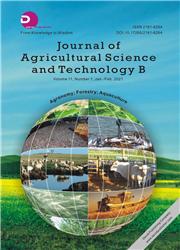Chemical Quality of Landrace Varieties Cultivated in Traditional Communities in the State of Maranhão, Brazil
引用次数: 0
Abstract
The aim of this study was to analyze the chemical composition of landrace seeds of rice, maize and cassava grown in traditional communities in the state of Maranhão. The sample collection was based on the description of the farmers for identification of varieties of plants, based on protein content, lipids, carbohydrates and mineral through Association of Official Analytical Chemists (AOAC) methods. Landrace seeds of nine maize cultivars, 13 rice and 40 cassava, with differences in centesimal composition in all varieties were analyzed. For maize landrace seeds the lipid values, carbohydrates and ash are in the average for the species. The protein contents and ash to the surveyed rice varieties were high, while the levels of lipids and carbohydrates are within average in relation to conventional varieties. The results obtained for cassava showed high percentages of protein, with a significant level for the feeding of the people of the community who consume their byproducts. Thus, differences in the chemical composition of the varieties studied showed the interference of genotype, management and environmental factors in their chemical and physiological quality, reinforcing the importance of the study of creole varieties for the development of new germplasm and for the guarantee of food sovereignty of traditional communities.巴西马拉尼昂州传统社区培育的长白品种的化学品质
本研究的目的是分析maranh州传统社区种植的水稻、玉米和木薯的地方种子的化学成分。样品采集是基于农民对植物品种鉴定的描述,基于蛋白质含量、脂质、碳水化合物和矿物质,通过官方分析化学家协会(AOAC)的方法。对9个玉米品种、13个水稻品种和40个木薯品种的地方品种种子进行了百分数组成差异分析。对于地方玉米种子,其脂质值、碳水化合物和灰分在该品种中处于平均水平。所调查水稻品种的蛋白质和灰分含量较高,而脂质和碳水化合物含量处于常规品种的平均水平。从木薯中获得的结果显示,蛋白质的比例很高,对于食用木薯副产品的社区居民来说,蛋白质的含量很高。因此,所研究品种化学成分的差异表明基因型、管理和环境因素对其化学和生理品质的干扰,加强了克里奥尔品种研究对新种质资源开发和传统群落食物主权保障的重要性。
本文章由计算机程序翻译,如有差异,请以英文原文为准。
求助全文
约1分钟内获得全文
求助全文

 求助内容:
求助内容: 应助结果提醒方式:
应助结果提醒方式:


